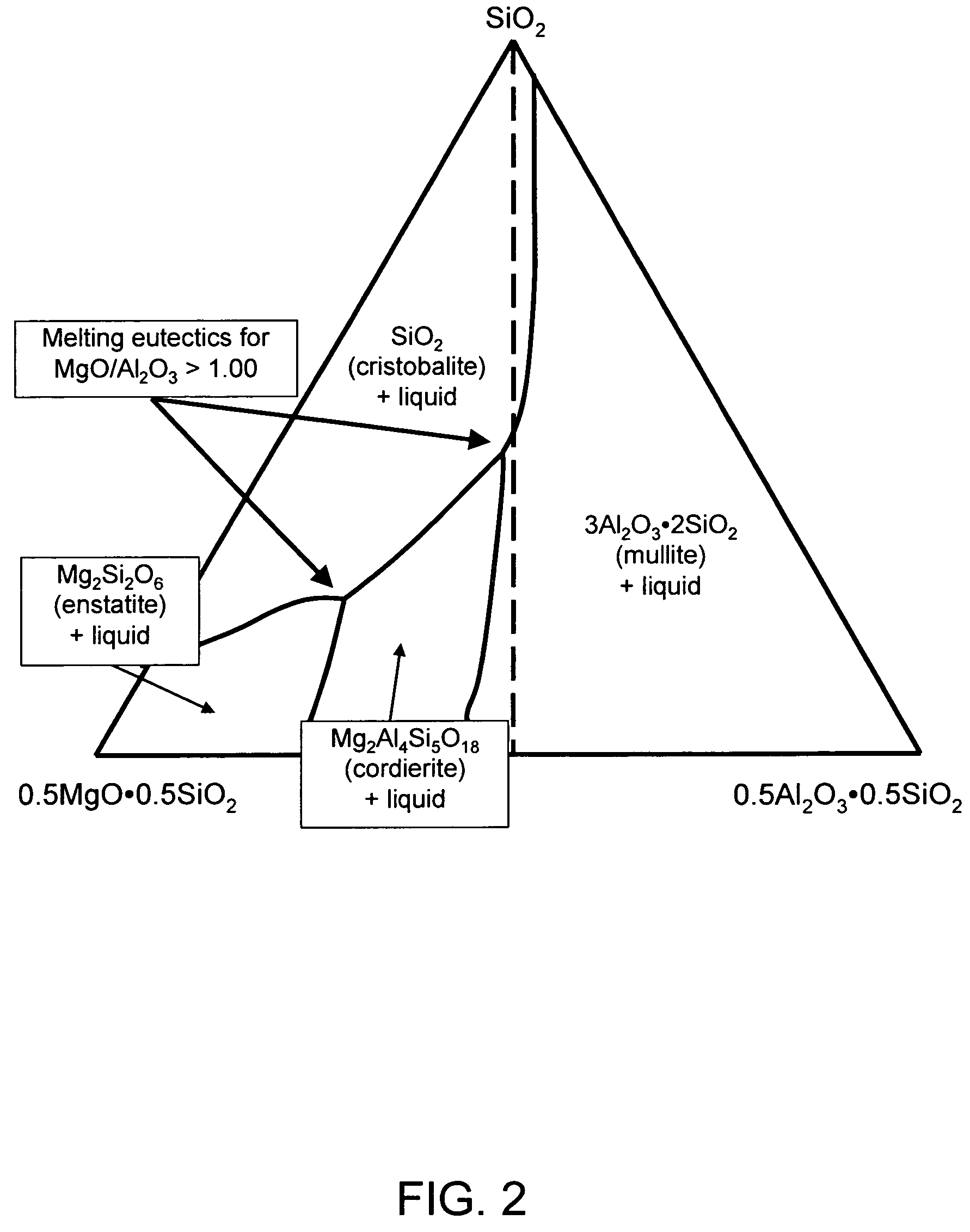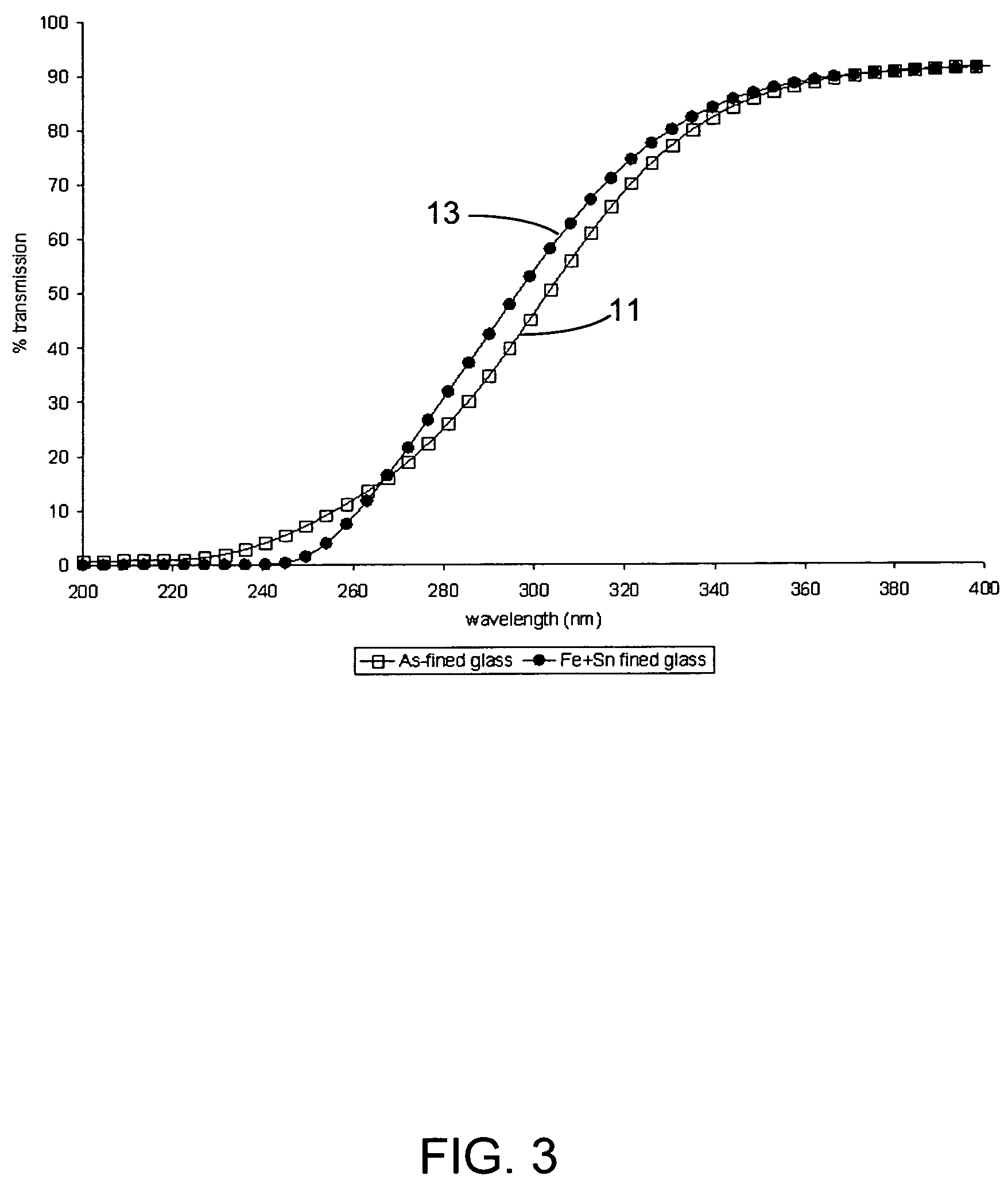Alkali-free glasses containing iron and tin as fining agents
a technology of iron and tin, which is applied in the field of alkali-free, boroalumino silicate glasses, can solve the problems of affecting the ability of the light to rotate, the manufacturing of these displays is extremely complex, and the fusion process places rather severe restrictions on the glass properties
- Summary
- Abstract
- Description
- Claims
- Application Information
AI Technical Summary
Benefits of technology
Problems solved by technology
Method used
Image
Examples
examples
[0150]The invention is further illustrated by the following examples, which are meant to be illustrative, and not in any way limiting, to the claimed invention.
examples 1-57
[0151]Table 1 lists examples of the glasses of the invention and comparative glasses in terms of mole percents which are either calculated on an oxide basis from the glass batches in the case of the crucible melts or determined from measurements on the finished glass for the compositions prepared using the continuous melter (see below). Table 1 also lists various physical properties for these glasses, the units for these properties being as follows:
[0152]
Densitygrams / centimeter3CTE×10−7 / ° C. (0-300° C.)Strain Point° C.Young's Modulus×10+6 psiMelting Temp.° C.Liquidus Temp.° C.Liquidus Viscositypoises
[0153]Inasmuch as the sum of the individual constituents totals or very closely approximates 100, for all practical purposes the reported values may be deemed to represent mole percent. The actual batch ingredients may comprise any materials, either oxides, or other compounds, which, when melted together with the other batch components, will be converted into the desired oxide in the pro...
example 58
[0164]FIG. 6 illustrates the dramatic improvement in defect levels that can be achieved by switching the Σ[RO] / [Al2O3] ratio of a glass from below 1.00 to above 1.00. This graph shows the results of an experimental study done over a 30 day period in which the Σ[RO] / [Al2O3] ratio was adjusted by increasing CaO and / or MgO at the expense of Al2O3 and / or SiO2. The triangular data points show the Σ[RO] / [Al2O3] ratios on the various days of the experiment, and the solid circles show the number of inclusions per pound. As can be seen, as soon as the Σ[RO] / [Al2O3] ratio broke through the 1.00 level, the inclusion level dropped by essentially two orders of magnitude and remained at low levels even with changes in CaO and / or MgO. Throughout the experiment, the MgO concentration was greater than 1.0 mole percent and the SiO2 concentration was less than 71 mole percent.
PUM
| Property | Measurement | Unit |
|---|---|---|
| liquidus viscosity | aaaaa | aaaaa |
| liquidus viscosities | aaaaa | aaaaa |
| liquidus viscosities | aaaaa | aaaaa |
Abstract
Description
Claims
Application Information
 Login to View More
Login to View More - R&D
- Intellectual Property
- Life Sciences
- Materials
- Tech Scout
- Unparalleled Data Quality
- Higher Quality Content
- 60% Fewer Hallucinations
Browse by: Latest US Patents, China's latest patents, Technical Efficacy Thesaurus, Application Domain, Technology Topic, Popular Technical Reports.
© 2025 PatSnap. All rights reserved.Legal|Privacy policy|Modern Slavery Act Transparency Statement|Sitemap|About US| Contact US: help@patsnap.com



